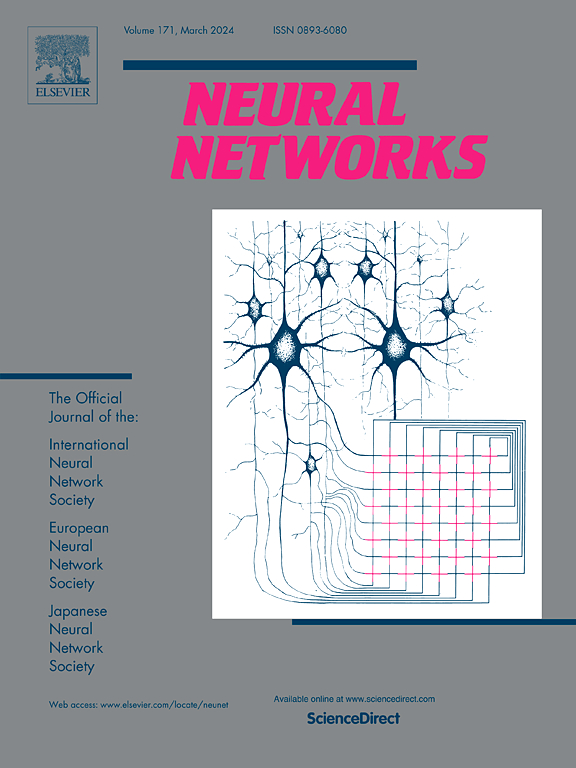Node transfer with graph contrastive learning for class-imbalanced node classification
IF 6.3
1区 计算机科学
Q1 COMPUTER SCIENCE, ARTIFICIAL INTELLIGENCE
引用次数: 0
Abstract
In graph representation learning, the class imbalance problem is a significant challenge that has received much attention from academics. Although current approaches have shown promising results, they have not adequately addressed the problems of node quantity imbalance and feature space imbalance in datasets. This research presents a node transfer with graph contrastive learning framework (NT-GCL) that aims to improve the representation capabilities of graph neural networks for minority classes nodes by balancing node quantity and feature space distributions. First, the proposed node transfer algorithm redistributes misclassified nodes from majority classes to achieve a balanced distribution of node quantity and feature space. This approach effectively prevents the feature space of minority classes from being compressed by majority classes during information propagation, further mitigating potential imbalance issues. Subsequently, the self-supervised contrastive learning strategy is employed to train the model without relying on labels, reducing the bias introduced by labeled data. Experiments conducted with various encoders on six public datasets demonstrate that NT-GCL exhibits strong competitiveness in class-imbalanced node classification.
基于图对比学习的类不平衡节点分类节点迁移
在图表示学习中,类不平衡问题是一个备受学术界关注的重大挑战。虽然目前的方法已经显示出良好的结果,但它们并没有充分解决数据集中节点数量不平衡和特征空间不平衡的问题。本文提出了一种基于图对比学习框架(NT-GCL)的节点迁移方法,旨在通过平衡节点数量和特征空间分布来提高图神经网络对少数类节点的表示能力。首先,提出的节点转移算法对多数分类中的错分类节点进行重新分配,实现节点数量和特征空间的均衡分布。这种方法有效地防止了信息传播过程中少数类的特征空间被多数类压缩,进一步缓解了潜在的不平衡问题。随后,采用自监督对比学习策略来训练模型,而不依赖于标签,减少了标签数据带来的偏差。在6个公共数据集上使用不同编码器进行的实验表明,NT-GCL在类不平衡节点分类方面具有很强的竞争力。
本文章由计算机程序翻译,如有差异,请以英文原文为准。
求助全文
约1分钟内获得全文
求助全文
来源期刊

Neural Networks
工程技术-计算机:人工智能
CiteScore
13.90
自引率
7.70%
发文量
425
审稿时长
67 days
期刊介绍:
Neural Networks is a platform that aims to foster an international community of scholars and practitioners interested in neural networks, deep learning, and other approaches to artificial intelligence and machine learning. Our journal invites submissions covering various aspects of neural networks research, from computational neuroscience and cognitive modeling to mathematical analyses and engineering applications. By providing a forum for interdisciplinary discussions between biology and technology, we aim to encourage the development of biologically-inspired artificial intelligence.
 求助内容:
求助内容: 应助结果提醒方式:
应助结果提醒方式:


